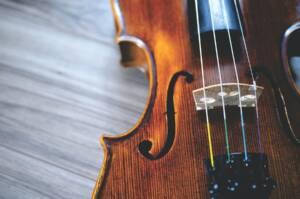Experience the Unseen: How Virtual Reality Soundscapes are Changing the Game

Virtual reality soundscapes refer to the audio component of virtual reality experiences. It involves the creation and integration of realistic and immersive sounds into virtual environments, enhancing the overall sensory experience for users. Sound is a crucial element in virtual reality as it helps to create a sense of presence and immersion, making the virtual world feel more realistic and believable.
The Power of Sound in Virtual Reality
Sound plays a significant role in enhancing the immersive experience in virtual reality. It helps to create a sense of presence by providing auditory cues that align with the visual stimuli. For example, in a virtual reality game where the user is exploring a forest, the sound of rustling leaves and chirping birds can make the experience more realistic and engaging.
Moreover, sound has a profound impact on emotions and behavior. It can evoke certain feelings and reactions from users, influencing their overall experience in virtual reality. For instance, a horror game with eerie and suspenseful sound effects can create a sense of fear and tension, heightening the user’s emotional response.
The Evolution of Virtual Reality Soundscapes
The history of virtual reality soundscapes can be traced back to the early days of virtual reality technology. In the 1990s, when virtual reality was still in its infancy, basic stereo sound was used to provide audio feedback in virtual environments. However, as technology advanced, so did the capabilities of virtual reality soundscapes.
Advancements in technology and sound design have allowed for more realistic and immersive audio experiences in virtual reality. Spatial audio techniques, such as binaural audio and ambisonics, have been developed to create a three-dimensional sound field that accurately represents the user’s position and orientation in the virtual environment. This enhances the sense of presence and immersion, making the virtual world feel more lifelike.
The Impact of Virtual Reality Soundscapes on Gaming
Sound plays a crucial role in enhancing gameplay in virtual reality. It provides important auditory cues that help users navigate and interact with the virtual environment. For example, in a virtual reality shooting game, the sound of footsteps can alert the player to the presence of an enemy, allowing them to react quickly and strategically.
Furthermore, immersive sound design can greatly enhance the overall gaming experience. It can create a more immersive and realistic world, making the gameplay more engaging and enjoyable. For instance, in a racing game, the sound of engines revving and tires screeching can make the user feel like they are actually behind the wheel of a high-speed car.
There have been several successful virtual reality games that have utilized immersive soundscapes to enhance gameplay. One notable example is “Resident Evil 7: Biohazard,” which is a horror game that uses spatial audio to create a truly terrifying experience. The game’s realistic and immersive sound design adds an extra layer of fear and tension, making it one of the most immersive horror games in virtual reality.
The Role of Immersive Audio in Virtual Reality
Immersive audio is a key component of virtual reality soundscapes. Unlike traditional audio, which is typically delivered through stereo speakers or headphones, immersive audio aims to create a three-dimensional sound field that accurately represents the user’s position and orientation in the virtual environment.
One of the main benefits of immersive audio in virtual reality is its ability to enhance the sense of presence and immersion. By accurately representing the user’s position and orientation in the virtual environment, immersive audio helps to create a more realistic and believable experience. For example, if a user turns their head to the left in a virtual reality game, the sound should change accordingly to reflect their new perspective.
In addition to enhancing presence and immersion, immersive audio also improves spatial awareness in virtual reality. By accurately representing the position and movement of sound sources in the virtual environment, users can better locate and interact with objects and characters. This adds a new level of realism and interactivity to virtual reality experiences.
The Future of Virtual Reality Soundscapes
The future of virtual reality soundscapes holds great potential for even more immersive and realistic experiences. As technology continues to advance, we can expect to see further improvements in sound design and audio rendering techniques.
One area of development is the use of haptic feedback in virtual reality soundscapes. Haptic feedback refers to the use of tactile sensations to enhance the virtual reality experience. By integrating haptic feedback with immersive audio, users can not only hear but also feel the virtual environment, further enhancing the sense of presence and immersion.
Another area of advancement is the use of artificial intelligence (AI) in virtual reality soundscapes. AI can be used to dynamically generate and adapt soundscapes based on user interactions and preferences. This allows for a more personalized and interactive audio experience, making virtual reality even more engaging and immersive.
The Benefits of Virtual Reality Soundscapes for Education and Training
Virtual reality soundscapes have significant potential for enhancing education and training programs. By creating realistic and immersive audio experiences, virtual reality can provide learners with a more engaging and interactive learning environment.
For example, in medical training, virtual reality soundscapes can be used to simulate real-life scenarios, allowing medical students to practice their skills in a safe and controlled environment. By incorporating realistic sounds, such as heartbeats or breathing patterns, learners can develop their diagnostic and decision-making abilities in a more realistic setting.
Similarly, in language learning, virtual reality soundscapes can create immersive environments where learners can practice their language skills in context. For instance, learners can be placed in a virtual café where they can interact with virtual characters and practice ordering food or having conversations. The realistic sounds of the café environment can help learners develop their listening and speaking skills in a more authentic way.
The Importance of Sound Design in Virtual Reality
Sound designers play a crucial role in creating virtual reality soundscapes. They are responsible for designing and implementing the audio elements that enhance the immersive experience in virtual reality.
Attention to detail is essential in sound design for virtual reality. Sound designers must carefully consider the spatial positioning and movement of sound sources, as well as the acoustic properties of the virtual environment. By accurately representing these elements, sound designers can create a more realistic and believable audio experience.
Moreover, sound designers must also consider the emotional impact of sound in virtual reality. They must carefully select and design sounds that evoke the desired emotional response from users. For example, in a virtual reality game, the sound of a door creaking open can create a sense of anticipation and suspense, heightening the user’s emotional engagement.
The Challenges of Creating Realistic Virtual Reality Soundscapes
Creating realistic soundscapes in virtual reality presents several challenges. One of the main challenges is accurately representing the spatial positioning and movement of sound sources. In traditional audio, sound is typically delivered through stereo speakers or headphones, which limits the ability to accurately represent three-dimensional sound fields. However, advancements in technology, such as binaural audio and ambisonics, have helped to overcome this challenge by providing more accurate spatial audio rendering techniques.
Another challenge is creating realistic reverberation and acoustic properties in virtual environments. In real-world environments, sound reflects off surfaces and interacts with the surrounding space, creating unique acoustic characteristics. Replicating these characteristics in virtual reality can be challenging but is crucial for creating a realistic and immersive audio experience.
Solutions to these challenges involve advancements in technology and sound design techniques. For example, using advanced algorithms and signal processing techniques, sound designers can simulate realistic reverberation and acoustic properties in virtual environments. Additionally, advancements in hardware, such as spatial audio headphones, can provide more accurate and immersive audio experiences.
The Psychology of Sound in Virtual Reality
Sound has a profound impact on the brain in virtual reality. It can evoke emotional responses and influence behavior, making the virtual reality experience more engaging and memorable.
In virtual reality, sound can trigger the brain’s fight-or-flight response, eliciting feelings of fear or excitement. For example, in a virtual reality roller coaster ride, the sound of wind rushing past and the screams of other riders can create a sense of exhilaration and adrenaline.
Moreover, sound can also influence behavior in virtual reality. For instance, studies have shown that certain sounds can affect decision-making and risk-taking behavior. By carefully designing and implementing sounds that align with desired behaviors, virtual reality experiences can be used to promote positive behaviors and learning outcomes.
The Potential of Virtual Reality Soundscapes for Transformative Experiences
Virtual reality soundscapes have the potential to create transformative experiences by providing realistic and immersive audio environments. By enhancing presence and immersion, sound can make virtual reality experiences more engaging and memorable.
Continued advancements in technology and sound design will further enhance the immersive experience in virtual reality. From haptic feedback to AI-generated soundscapes, the future of virtual reality soundscapes holds great potential for even more realistic and transformative experiences.
As virtual reality continues to evolve, it is important to recognize the importance of sound in creating truly immersive experiences. By investing in research and development in virtual reality soundscapes, we can unlock new possibilities for education, training, entertainment, and beyond.





